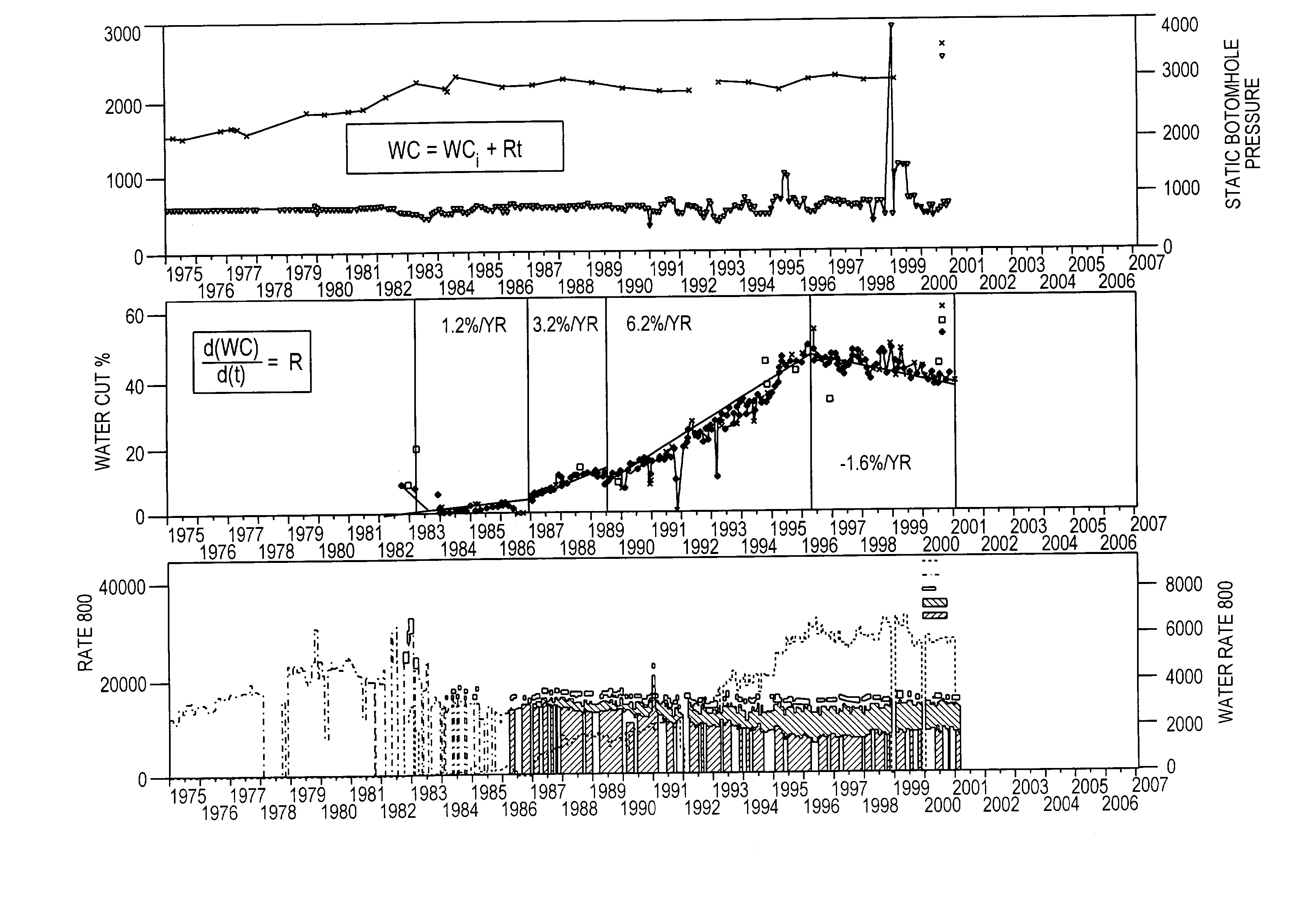Water cut rate of change analytic method
a technology of water cut rate and change, applied in the direction of survey, instruments, borehole/well accessories, etc., can solve the problems of loss of oil by leaving oil in the ground, water production too high to be lifted to the surface, poor sweep efficiency, etc., and achieve the effect of rapid identification
- Summary
- Abstract
- Description
- Claims
- Application Information
AI Technical Summary
Benefits of technology
Problems solved by technology
Method used
Image
Examples
Embodiment Construction
[0038]As described above, the prior art has been concerned with water cut percentage at a certain point of time as defined above in units of percent. However, the new WCRC technique has to do with the rate of change of water cut over time and its unit is in percent per unit time, e.g. percent per year or percent per month.
[0039]In addition, while the prior art dealt with the current measured water cut percentage, WCRC encompasses historical water cut behavior including the present and then is used to predict future performance. WCRC is obtained through manipulating the measured water cut by calculating the derivative or rate of change of water cut percentage with respect to time.
Definition of the Linear WC Rate of Change (WCRC)
[0040]The definition of WCRC is as follows. Assume a linear WC that increases with respect to time. Therefore, WC at any point of time is equal to the initial WC=WC1 plus the WCRC or “R” multiplied by time.
WC=WC1+Rt (2)
[0041]By differentiating this equation, ...
PUM
| Property | Measurement | Unit |
|---|---|---|
| time | aaaaa | aaaaa |
| pressure | aaaaa | aaaaa |
| pressure | aaaaa | aaaaa |
Abstract
Description
Claims
Application Information
 Login to View More
Login to View More - R&D
- Intellectual Property
- Life Sciences
- Materials
- Tech Scout
- Unparalleled Data Quality
- Higher Quality Content
- 60% Fewer Hallucinations
Browse by: Latest US Patents, China's latest patents, Technical Efficacy Thesaurus, Application Domain, Technology Topic, Popular Technical Reports.
© 2025 PatSnap. All rights reserved.Legal|Privacy policy|Modern Slavery Act Transparency Statement|Sitemap|About US| Contact US: help@patsnap.com



